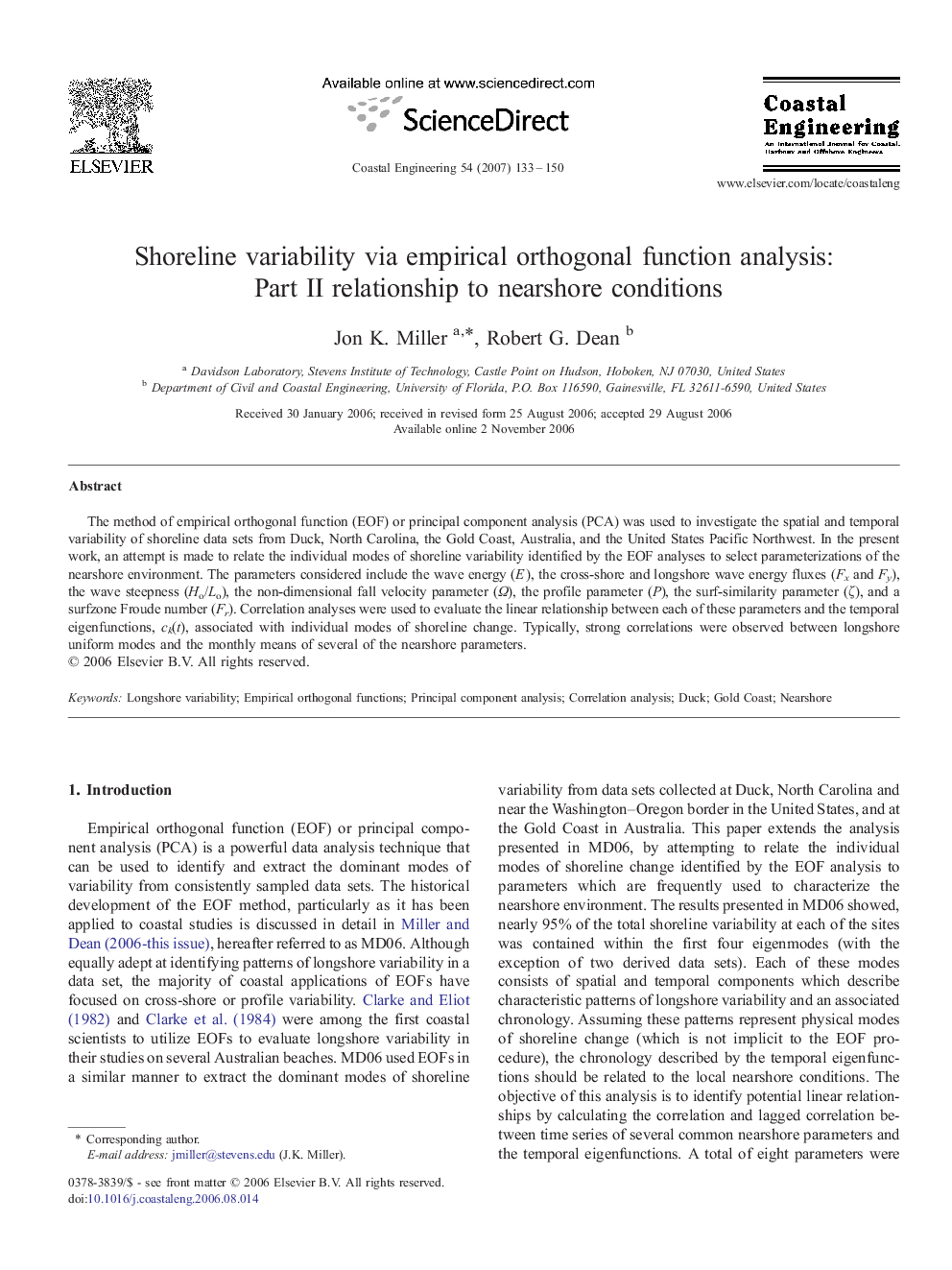| Article ID | Journal | Published Year | Pages | File Type |
|---|---|---|---|---|
| 1721570 | Coastal Engineering | 2007 | 18 Pages |
The method of empirical orthogonal function (EOF) or principal component analysis (PCA) was used to investigate the spatial and temporal variability of shoreline data sets from Duck, North Carolina, the Gold Coast, Australia, and the United States Pacific Northwest. In the present work, an attempt is made to relate the individual modes of shoreline variability identified by the EOF analyses to select parameterizations of the nearshore environment. The parameters considered include the wave energy (E), the cross-shore and longshore wave energy fluxes (Fx and Fy), the wave steepness (Ho/Lo), the non-dimensional fall velocity parameter (Ω), the profile parameter (P), the surf-similarity parameter (ζ), and a surfzone Froude number (Fr). Correlation analyses were used to evaluate the linear relationship between each of these parameters and the temporal eigenfunctions, ck(t), associated with individual modes of shoreline change. Typically, strong correlations were observed between longshore uniform modes and the monthly means of several of the nearshore parameters.
